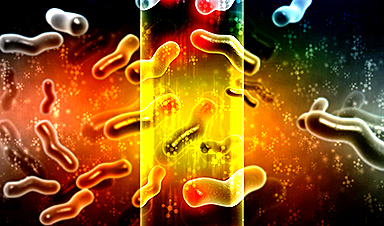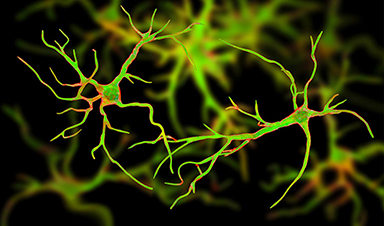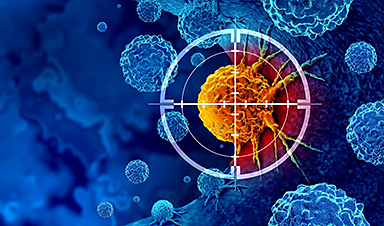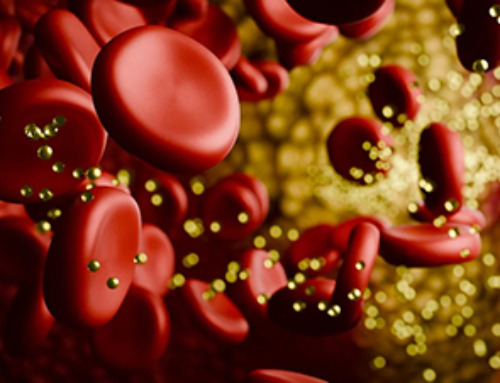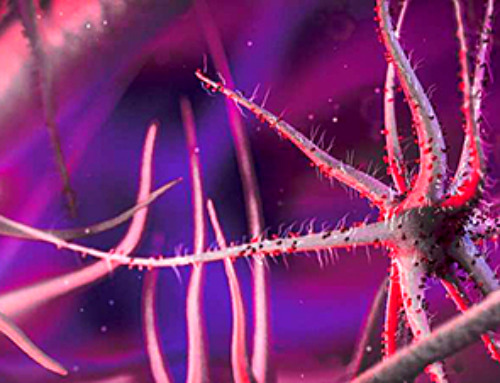Scientists have discovered a method to super-charge the 'engine' of sustainable fuel generation – by giving the materials a little twist.
The researchers, led by the University of Cambridge, are developing low-cost light-harvesting semiconductors that power devices for converting water into clean hydrogen fuel, using just the power of the sun. These semiconducting materials, known as copper oxides, are cheap, abundant and non-toxic, but their performance does not come close to silicon, which dominates the semiconductor market.
However, the researchers found that by growing the copper oxide crystals in a specific orientation so that electric charges move through the crystals at a diagonal, the charges move much faster and further, greatly improving performance. Tests of a copper oxide light harvester, or photocathode, based on this fabrication technique showed a 70% improvement over existing state-of-the-art oxide photocathodes, while also showing greatly improved stability.
The researchers say their results, reported in the journal Nature, show how low-cost materials could be fine-tuned to power the transition away from fossil fuels and toward clean, sustainable fuels that can be stored and used with existing energy infrastructure.
Challenges and Potential in Cuprous Oxide
Copper (I) oxide, or cuprous oxide, has been touted as a cheap potential replacement for silicon for years, since it is reasonably effective at capturing sunlight and converting it into electric charge. However, much of that charge tends to get lost, limiting the material's performance.
"Like other oxide semiconductors, cuprous oxide has its intrinsic challenges," said co-first author Dr Linfeng Pan from Cambridge's Department of Chemical Engineering and Biotechnology. "One of those challenges is the mismatch between how deep light is absorbed and how far the charges travel within the material, so most of the oxide below the top layer of material is essentially dead space."
"For most solar cell materials, it's defects on the surface of the material that causes a reduction in performance, but with these oxide materials, it's the other way round: the surface is largely fine, but something about the bulk leads to losses," said Professor Sam Stranks, who led the research. "This means the way the crystals are grown is vital to their performance."
To develop cuprous oxides to the point where they can be a credible contender to established photovoltaic materials, they need to be optimized so they can efficiently generate and move electric charges – made of an electron and a positively-charged electron 'hole' – when sunlight hits them.
Impact and Future Directions
One potential optimization approach is single-crystal thin films – very thin slices of material with a highly-ordered crystal structure, which are often used in electronics. However, making these films is normally a complex and time-consuming process.
Using thin film deposition techniques, the researchers were able to grow high-quality cuprous oxide films at ambient pressure and room temperature. By precisely controlling growth and flow rates in the chamber, they were able to 'shift' the crystals into a particular orientation. Then, using high temporal resolution spectroscopic techniques, they were able to observe how the orientation of the crystals affected how efficiently electric charges moved through the material.
"These crystals are basically cubes, and we found that when the electrons move through the cube at a body diagonal, rather than along the face or edge of the cube, they move an order of magnitude further," said Pan. "The further the electrons move, the better the performance."
"Something about that diagonal direction in these materials is magic," said Stranks. "We need to carry out further work to fully understand why and optimise it further, but it has so far resulted in a huge jump in performance." Tests of a cuprous oxide photocathode made using this technique showed an increase in performance of more than 70% over existing state-of-the-art electrodeposited oxide photocathodes.
"In addition to the improved performance, we found that the orientation makes the films much more stable, but factors beyond the bulk properties may be at play," said Pan.
The researchers say that much more research and development is still needed, but this and related families of materials could have a vital role in the energy transition.
"There's still a long way to go, but we're on an exciting trajectory," said Stranks. "There's a lot of interesting science to come from these materials, and it's interesting for me to connect the physics of these materials with their growth, how they form, and ultimately how they perform."
Reference: "High carrier mobility along the [111] orientation in Cu2O photoelectrodes" by Linfeng Pan, Linjie Dai, Oliver J. Burton, Lu Chen, Virgil Andrei, Youcheng Zhang, Dan Ren, Jinshui Cheng, Linxiao Wu, Kyle Frohna, Anna Abfalterer, Terry Chien-Jen Yang, Wenzhe Niu, Meng Xia, Stephan Hofmann, Paul J. Dyson, Erwin Reisner, Henning Sirringhaus, Jingshan Luo, Anders Hagfeldt, Michael Grätzel and Samuel D. Stranks, 24 April 2024, Nature.
DOI: 10.1038/s41586-024-07273-8
The research was a collaboration with École Polytechnique Fédérale de Lausanne, Nankai University and Uppsala University. The research was supported in part by the European Research Council, the Swiss National Science Foundation, and the Engineering and Physical Sciences Research Council (EPSRC), part of UK Research and Innovation (UKRI). Sam Stranks is Professor of Optoelectronics in the Department of Chemical Engineering and Biotechnology, and a Fellow of Clare College, Cambridge.
News
New mRNA therapy targets drug-resistant pneumonia
Bacteria that multiply on surfaces are a major headache in health care when they gain a foothold on, for example, implants or in catheters. Researchers at Chalmers University of Technology in Sweden have found [...]
Current Heart Health Guidelines Are Failing To Catch a Deadly Genetic Killer
New research reveals that standard screening misses most people with a common inherited cholesterol disorder. A Mayo Clinic study reports that current genetic screening guidelines overlook most people who have familial hypercholesterolemia, an inherited disorder that [...]
Scientists Identify the Evolutionary “Purpose” of Consciousness
Summary: Researchers at Ruhr University Bochum explore why consciousness evolved and why different species developed it in distinct ways. By comparing humans with birds, they show that complex awareness may arise through different neural architectures yet [...]
Novel mRNA therapy curbs antibiotic-resistant infections in preclinical lung models
Researchers at the Icahn School of Medicine at Mount Sinai and collaborators have reported early success with a novel mRNA-based therapy designed to combat antibiotic-resistant bacteria. The findings, published in Nature Biotechnology, show that in [...]
New skin-permeable polymer delivers insulin without needles
A breakthrough zwitterionic polymer slips through the skin’s toughest barriers, carrying insulin deep into tissue and normalizing blood sugar, offering patients a painless alternative to daily injections. A recent study published in the journal Nature examines [...]
Multifunctional Nanogels: A Breakthrough in Antibacterial Strategies
Antibiotic resistance is a growing concern - from human health to crop survival. A new study successfully uses nanogels to target and almost entirely inhibit the bacteria P. Aeruginosa. Recently published in Angewandte Chemie, the study [...]
Nanoflowers rejuvenate old and damaged human cells by replacing their mitochondria
Biomedical researchers at Texas A&M University may have discovered a way to stop or even reverse the decline of cellular energy production—a finding that could have revolutionary effects across medicine. Dr. Akhilesh K. Gaharwar [...]
The Stunning New Push to Protect the Invisible 99% of Life
Scientists worldwide have joined forces to build the first-ever roadmap for conserving Earth’s vast invisible majority—microbes. Their new IUCN Specialist Group reframes conservation by elevating microbial life to the same urgency as plants and [...]
Scientists Find a Way to Help the Brain Clear Alzheimer’s Plaques Naturally
Scientists have discovered that the brain may have a built-in way to fight Alzheimer’s. By activating a protein called Sox9, researchers were able to switch on star-shaped brain cells known as astrocytes and turn them into [...]
Vision can be rebooted in adults with amblyopia, study suggests
Temporarily anesthetizing the retina briefly reverts the activity of the visual system to that observed in early development and enables growth of responses to the amblyopic eye, new research shows. In the common vision [...]
Ultrasound-activated Nanoparticles Kill Liver Cancer and Activate Immune System
A new ultrasound-guided nanotherapy wipes out liver tumors while training the immune system to keep them from coming back. The study, published in Nano Today, introduces a biodegradable nanoparticle system that combines sonodynamic therapy and cell [...]
Magnetic nanoparticles that successfully navigate complex blood vessels may be ready for clinical trials
Every year, 12 million people worldwide suffer a stroke; many die or are permanently impaired. Currently, drugs are administered to dissolve the thrombus that blocks the blood vessel. These drugs spread throughout the entire [...]
Reviving Exhausted T Cells Sparks Powerful Cancer Tumor Elimination
Scientists have discovered how tumors secretly drain the energy from T cells—the immune system’s main cancer fighters—and how blocking that process can bring them back to life. The team found that cancer cells use [...]
Very low LDL-cholesterol correlates to fewer heart problems after stroke
Brigham and Women's Hospital's TIMI Study Group reports that in patients with prior ischemic stroke, very low achieved LDL-cholesterol correlated with fewer major adverse cardiovascular events and fewer recurrent strokes, without an apparent increase [...]
“Great Unified Microscope” Reveals Hidden Micro and Nano Worlds Inside Living Cells
University of Tokyo researchers have created a powerful new microscope that captures both forward- and back-scattered light at once, letting scientists see everything from large cell structures to tiny nanoscale particles in a single shot. Researchers [...]
Breakthrough Alzheimer’s Drug Has a Hidden Problem
Researchers in Japan found that although the Alzheimer’s drug lecanemab successfully removes amyloid plaques from the brain, it does not restore the brain’s waste-clearing system within the first few months of treatment. The study suggests that [...]








